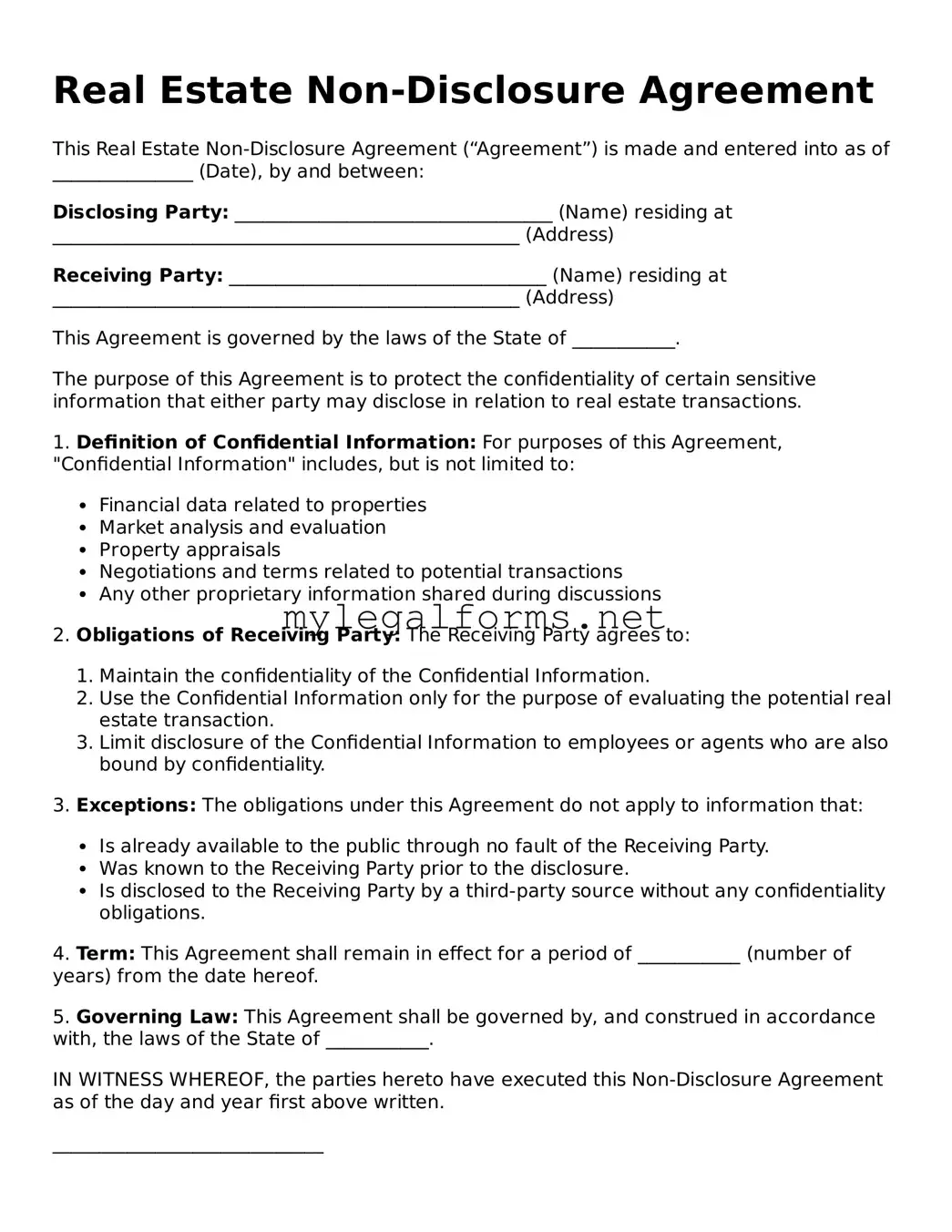Real Estate Non-Disclosure Agreement
This Real Estate Non-Disclosure Agreement (“Agreement”) is made and entered into as of _______________ (Date), by and between:
Disclosing Party: __________________________________ (Name) residing at __________________________________________________ (Address)
Receiving Party: __________________________________ (Name) residing at __________________________________________________ (Address)
This Agreement is governed by the laws of the State of ___________.
The purpose of this Agreement is to protect the confidentiality of certain sensitive information that either party may disclose in relation to real estate transactions.
1. Definition of Confidential Information: For purposes of this Agreement, "Confidential Information" includes, but is not limited to:
- Financial data related to properties
- Market analysis and evaluation
- Property appraisals
- Negotiations and terms related to potential transactions
- Any other proprietary information shared during discussions
2. Obligations of Receiving Party: The Receiving Party agrees to:
- Maintain the confidentiality of the Confidential Information.
- Use the Confidential Information only for the purpose of evaluating the potential real estate transaction.
- Limit disclosure of the Confidential Information to employees or agents who are also bound by confidentiality.
3. Exceptions: The obligations under this Agreement do not apply to information that:
- Is already available to the public through no fault of the Receiving Party.
- Was known to the Receiving Party prior to the disclosure.
- Is disclosed to the Receiving Party by a third-party source without any confidentiality obligations.
4. Term: This Agreement shall remain in effect for a period of ___________ (number of years) from the date hereof.
5. Governing Law: This Agreement shall be governed by, and construed in accordance with, the laws of the State of ___________.
IN WITNESS WHEREOF, the parties hereto have executed this Non-Disclosure Agreement as of the day and year first above written.
_____________________________
Disclosing Party Signature
Date: _______________
_____________________________
Receiving Party Signature
Date: _______________
